Artist in Residence Program
2021 Resident Artist
ARCUS Project’s Artist-in-Residence Program received 233 applications from abroad (52 countries and regions). Following a careful screening process, Marjolein van der Loo from the Netherlands has been selected. She will join the two participants from the 2020 online residency―Ieva Raudsepa (Latvia) and millonaliu (Klodiana Millona and Yuan Chun Liu) (Albania, Taiwan)―for the 2021 online residency held for 85 days from December 3, 2021, to February 25, 2022. OLTA (Japan) will participate in the residency at ARCUS Studio in Moriya, Ibaraki.
As the judges for this year’s applications, we welcomed Iseki Yu, a curator at Contemporary Art Center, Art Tower Mito and Nomura Shinobu, a senior curator at Tokyo Opera City Art Gallery who made the selection through a process of discussion with the ARCUS Project Administration Committee.
Overview of the 2021 Selection
In fiscal 2021, applications were accepted for one resident artist from abroad. For the first time since ARCUS Project launched, a fee was charged to apply. As such, the number of applicants was lower than usual, decreasing to 233. On the other hand, there was a notable overall improvement in the quality of applicants in terms of their activities and residency plans and the screening process unfolded as a series of in-depth discussions. Applicants’ plans included socially engaged projects, such as the ecology of plants and lakes, the electronic waste that is the underside of advances in digital technology, conflict between military bases and residents, interpreting the city materially through concrete and its consumption, and using art as a means of healing the community. From these many candidates, we chose a practitioner who collaborates widely with others to reconnect humankind and nature.
(Director, Ozawa Keisuke)
2020-2021 Resident Artist
Marjolein van der Loo
The Netherlands
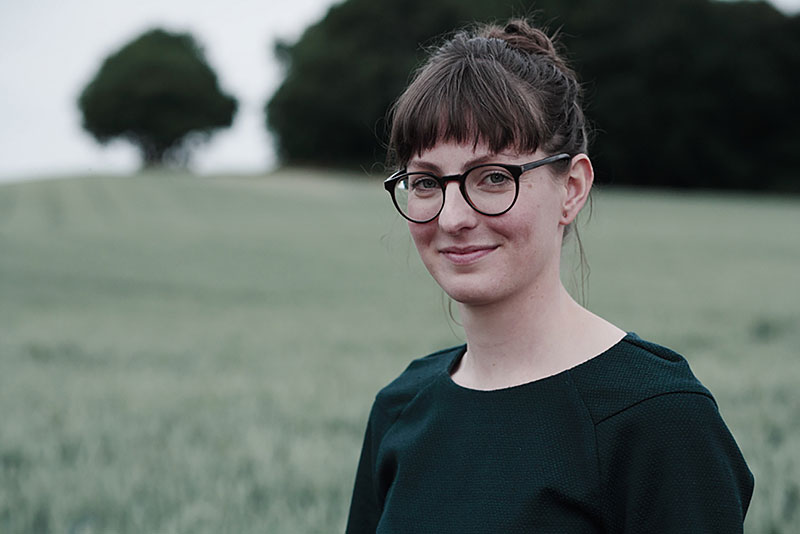
Photo: Roel Janssen
Born in Geleen, the Netherlands, in 1987, Marjolein van der Loo is based in Maastricht. She studied art education at Zuyd University of Applied Science in Maastricht and then visual cultures and curating at Aalto University in Helsinki. Alongside her work as a curator and educator, Van der Loo engages critically with modern society in her practice and methodology, attempting to reconnect humankind and nature. As a form of resistance against our homogenizing and exclusionary society, she collaborates with various partners and develops educational projects and exhibitions that utilize not only sight but all the senses. Her projects, including Lunar Calendar, an almanac for artistic practice developed from traditions of biodynamic farming and astrology, indicate the future that lies beyond modern society from the perspective of the nonhuman and ways for humans to survive.
Selected Works
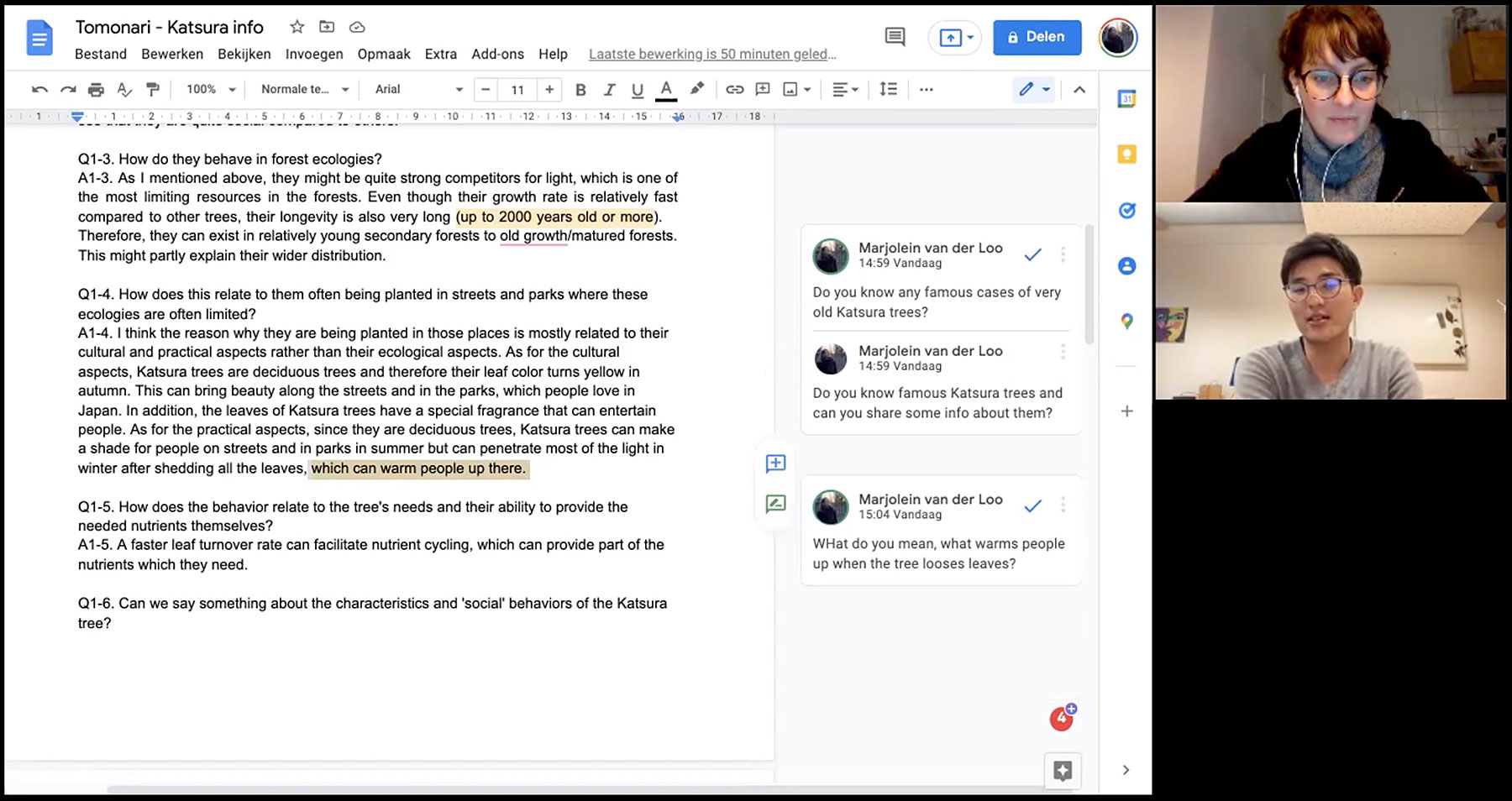
Interview with Forest Ecology researcher Tomonari Matsuo from Wageningen University

Ceramics baking at an ARCUS Supporter’s workshop
Artist Statement
At ARCUS Project, my research has orbited around the Katsura tree. This tree is an elemental spirit in the Japanese landscape in the fall season. As the color transformation of Katura’s leaves changes our environment, they remind us of our connection to the seasons. Its embeddedness in Japanese folklore and traditional storytelling leads us to yokai, legend, and gardener: Katsura-Otoko. Stories tell that his efforts in cutting down a Katsura tree on the moon cause lunar cycles and hence include cosmology and ecology as a natural part of our earthly existence. With Katsura and Katsura-Otoko as companions, I have been orienting the large field of ecological, historical, and experiential relations with the Katsura tree, moon, and Autumn season.
I have started the research by acquiring the plant, planting them in my garden, and working on a reciprocal relationship. This relation has been inspired by the honorable harvest formulated by Robin Wall Kimmerer, in which a plant is approached by expressing one’s intentions towards them. Through thorough observation of the plant and their environment, care is practiced. Additionally, along with the moon cycles, I have offered my period to the Katsura which contains much valuable nutrition for the tree.
As part of this course of observation, I kept a diary, and along the fall season, I collected some of the fallen leaves to study their scent. In conversation with perfume designer Tanja Schell, we investigated the sweet cotton candy smell Katsura leaves are known for. She shared her insights in the gradual development of the scent of the leaves which moves from strongly contrasting sweet and fresh green to balanced tones that remind of green tea.
During the residency, I have paid much attention to other deciduous plants and how the resources of light and weather affected the change of color of the leaves. During these observations, I stumbled upon a lane with municipal Katsura trees and learned about the cities’ care of trees and motivation for planting and removing Katsura trees.
When the days became short, cold, and wet, I have contacted Japanese friends and colleagues to learn more about their knowledge of Katsura trees, the legend of Katsura-Otoko, and how these are possibly embedded in their memories of Autumn activities and foods. Breaks in between research and meetings were filled with trying these recipes and experiencing the tastes of the Japanese fall season.
Reason for Selection
Marjolein van der Loo plans to investigate the Cercidiphyllum japonicum (katsura) tree and the related figure of Katsura-otoko (katsura man), which she hopes to present in the form of a video work or lecture performance as part of her engagement with the relationship between humans and ecosystems from the perspective of plants. Originally a character in Chinese folklore called Wu Gang and then spreading to Japan and developing into Katsura-otoko, both versions of the figure are associated with the moon. Attempting to reinterpret humankind through the framework of plants and the moon, Van der Loo will explore a relative understanding of modern society and capitalism, which have caused a rift between humans and nature and brought imbalance to ecosystems. In so doing, she will endeavor to illuminate decolonial paths. An artist, curator, and educator, Van der Loo’s methodology sees her present research while exploring a wide range of approaches, including workshops, writing, exhibitions, performances, and lectures. (Director, Ozawa Keisuke)
Ieva Raudsepa
Latvia
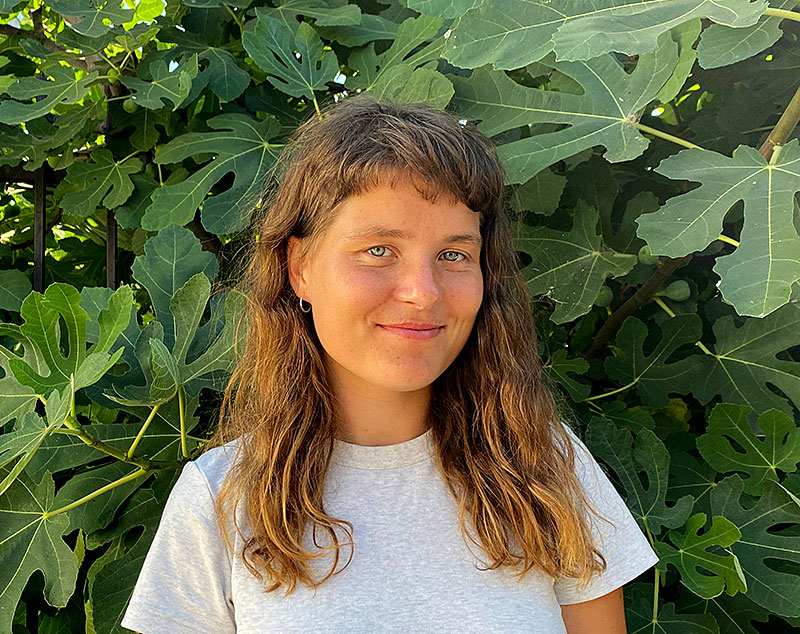
Photo: Alia Ali
Born in Riga, Latvia, in 1992, Ieva Raudsepa is now based in Los Angeles. After studying philosophy at the University of Latvia, she received an MFA at the California Institute of the Arts. As someone born following the independence of Latvia from the Soviet Union, and brought up during the subsequent period of transition from communism to capitalism, Raudsepa’s work attempts mainly through photography and video to capture her fellow members of this young generation that emerged immediately after the collapse of the Soviet Union. In her video practice, she creates narratives by effectively fusing theory and fiction, and then re-questions these narratives at a metalevel. Alongside revealing the fictionality of a performance by having actors perform in everyday spaces, she is interested in what actual circumstances tell us by chance.
Selected Works

Interviewing the architectural historian Taro Igarashi
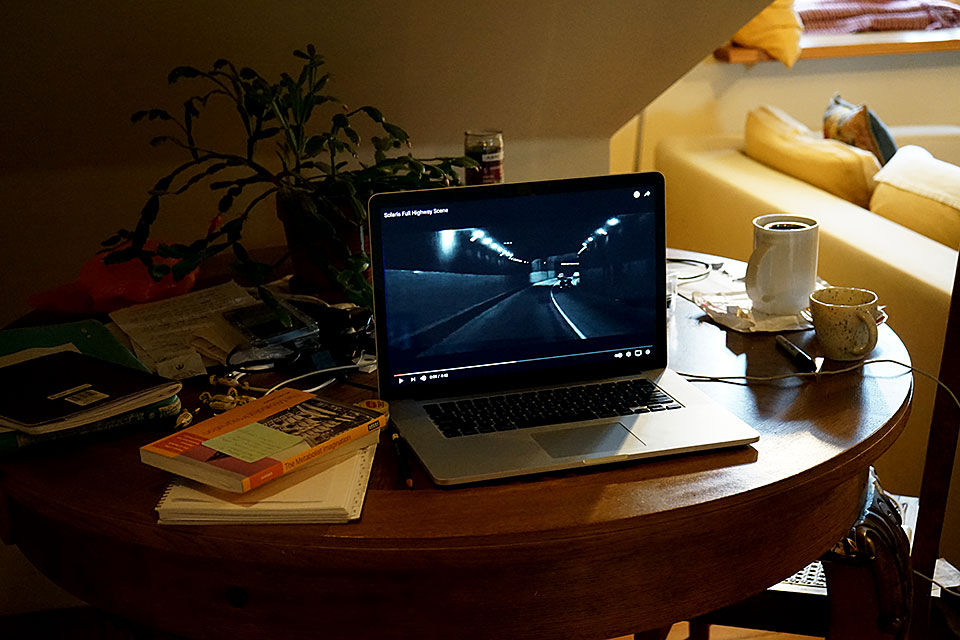
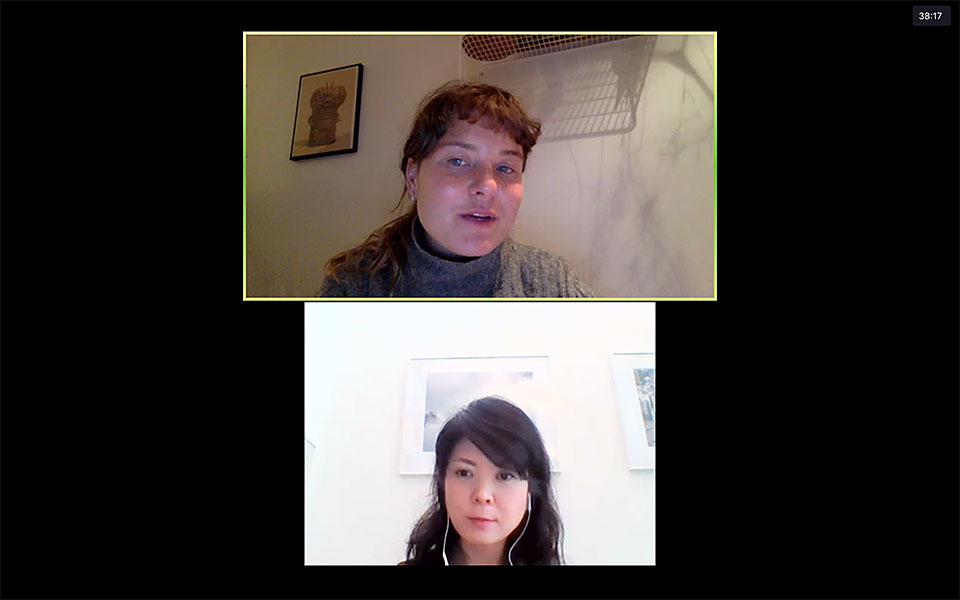
Curator visit (Shihoko Iida)
Open Studio
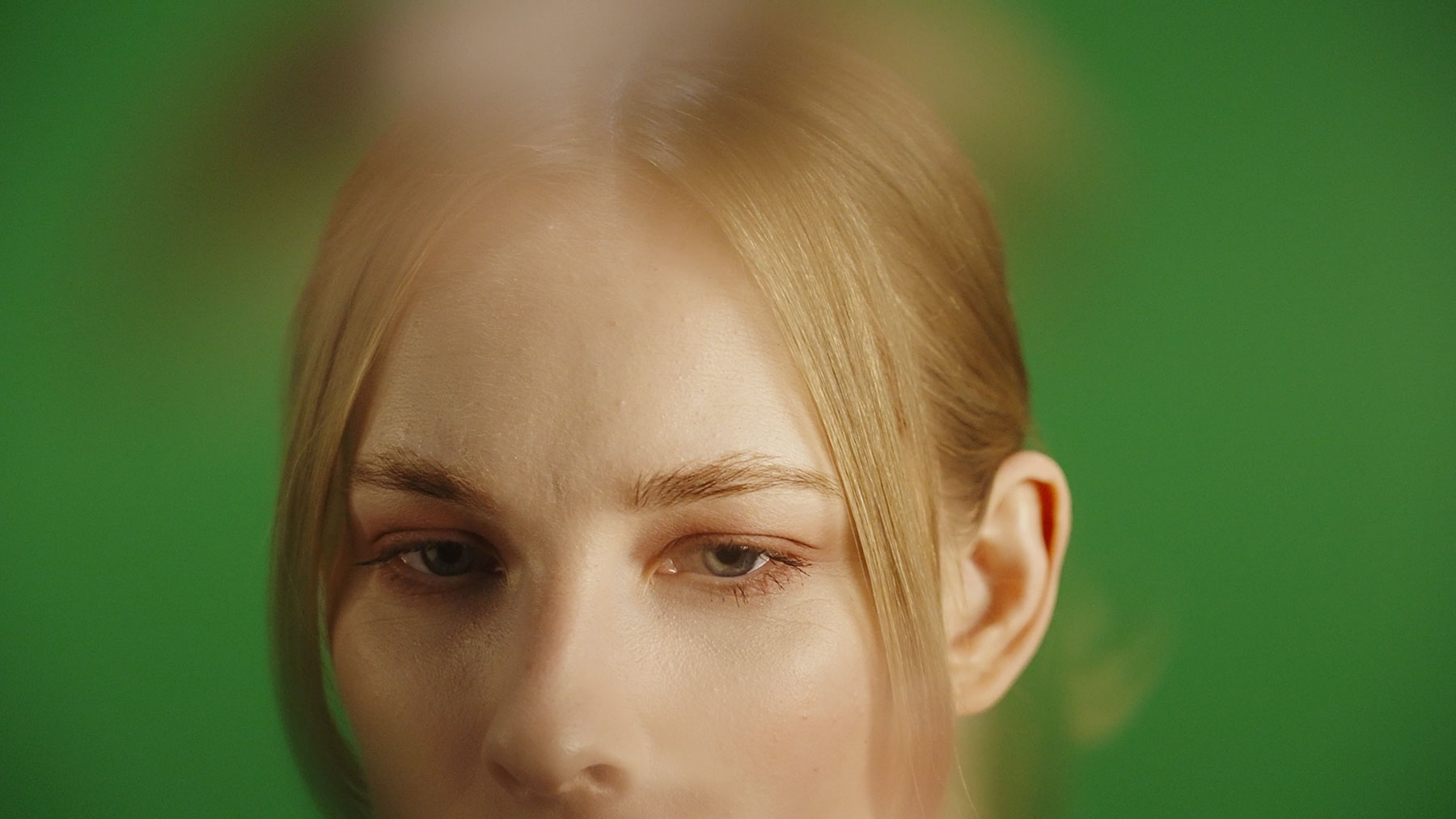
Still from Tokyo Highway Scene
Single channel video, 10’25”
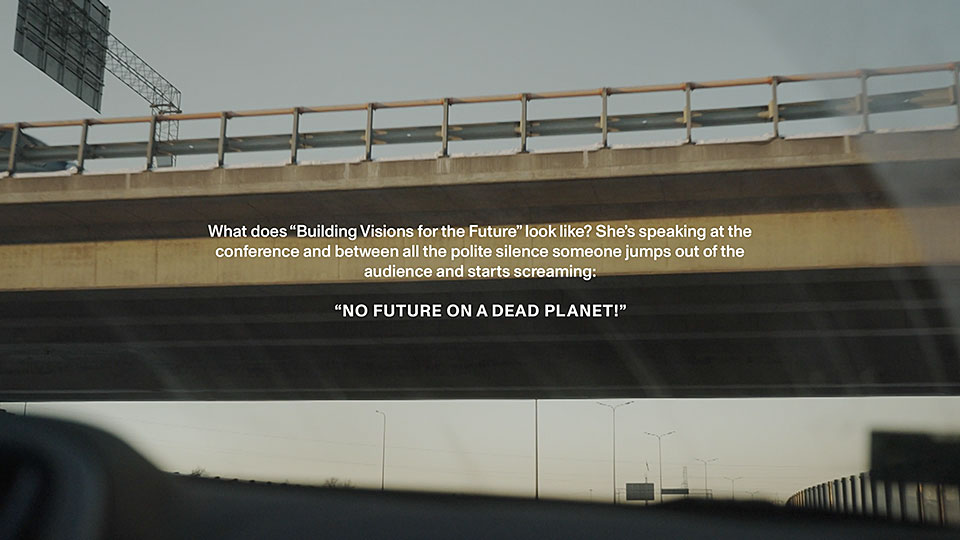
Still from Tokyo Highway Scene
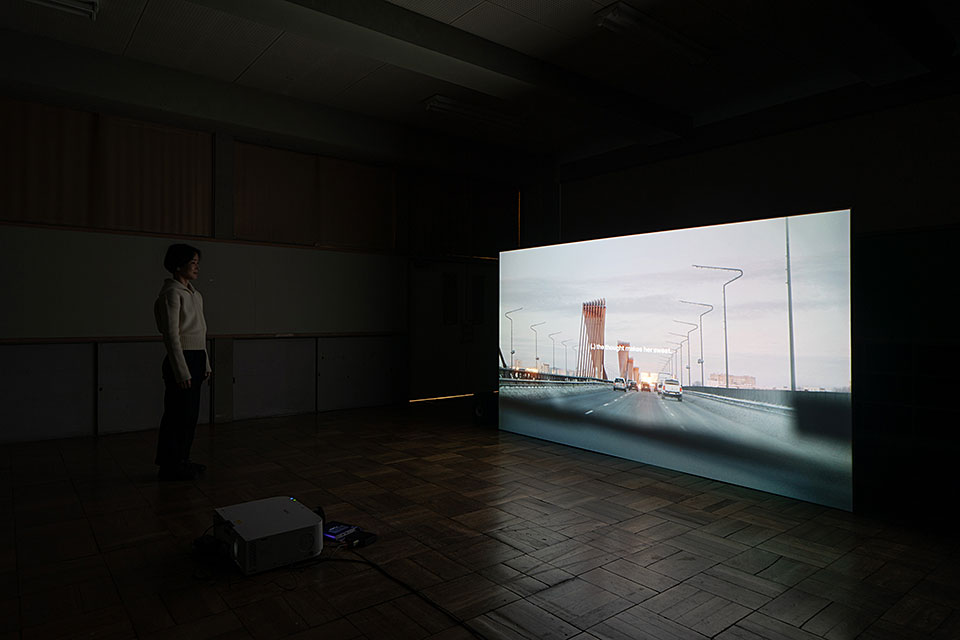
Still from Tokyo Highway Scene
Artist Statement
Tokyo Highway Scene
The starting point for my project was an episode from the 1972 Andrei Tarkovsky movie Solaris, which he shot in 1971 on the highways in Tokyo and in the movie it represents an imaginary future city.
The rapid development of post-war Tokyo made the city into an image of the future in the cultural imagination. I am interested in the way that people were able to imagine “the future” in the past and what can we make of it today? From the perspective of now, the future no longer looks like a promise of technical utopia and progress, but more like life in a constant state of emergency.
Similarly to the episode from Solaris, parts of my video piece are shot from the perspective of a vehicle moving through the city and this becomes the backdrop for a story about someone from an imaginary future driving through Tokyo. The character of this fictional story finds herself at a moment of great uncertainty: Is there anyone who is looking forward to the moment that comes after this one?
Reason for Selection
Ieva Raudsepa plans to make a video work inspired by Solaris, the 1972 film by Andrei Tarkovsky. Solaris features the then newly constructed Shuto Expressway, a highway in Tokyo, as a symbol of the future city. The Shuto Expressway, which facilitates high-speed movement, encompasses both a sense of a present day where the prior rhythms of the city are dismantled while new rhythms are formed as well as premonitions of a future where this will accelerate even further. Raudsepa plans to conduct online research on the changes to Tokyo caused by the construction of the Shuto Expressway, and then write a script interweaving this with fiction. In our present, where economies and people’s lives have slowed down due to the coronavirus pandemic, Raudsepa’s practice will explore with a skeptical eye how modern society desires and mythologizes speed.
Comment for Open Studios
The Latvian Ieva Raudsepa creates narratives by effectively fusing personal observations, history, and fiction in a practice that utilizes video, text, and photography. Alongside revealing the fictionality of actors by having them perform in everyday spaces, she is interested in what actual circumstances tell us by chance.
At ARCUS Project, Raudsepa has conducted research over two years, and made a video work based on the 1972 film Solaris by the Soviet director Andrei Tarkovsky, overlaying the future as seen from the past with the future as seen from the present, when a pandemic rages around the world, and highlighting the ambiguity of our awareness of the future. Solaris features a scene that uses the Tokyo Metropolitan Expressway to depict what was then seen as a futuristic city. Ordinarily, Raudsepa would have come to Japan and conducted research on the expressway and urban planning. Due to the global impact of the coronavirus pandemic, she was unable to fulfill these wishes, though this is strangely reminiscent of Tarkovsky’s own experience. He originally wanted to film the world expo in Japan as an image of the future but was denied permission to travel, meaning the Tokyo Metropolitan Expressway was used as a substitute location. Being unable to travel and go to a location in person. The burgeoning imagination, contrasting with an unbridgeable distance. How could Raudsepa’s work deal with these issues? What she has done confronts the circumstances while also nonetheless sketching in the contours of memory and the imagination that emerge from the history surrounding cinema as well as of a future that remains uncertain. (Director, Ozawa Keisuke)
millonaliu [Klodiana Millona & Yuan Chun Liu]
Albania/Taiwan

Photo: Pichaya Puapoomcharoen
The Rotterdam-based millonaliu is a duo of spatial designers and researchers comprising Klodiana Millona from Albania and Yuan Chun Liu from Taiwan. After studying interior architecture at the Royal Academy of Art, The Hague, they began developing interdisciplinary activities with a focus on architecture. The duo’s work encompasses everything from architectural practice to video, publishing, exhibitions, and workshops. Made during a stay in Ukraine, Leave Us Alone examines factories left behind after social change, and by holding a festival in collaboration with workers, millonaliu highlighted the social aspect of factories whereby an isolated community is formed while the times move on.
Selected Works


Interviewing the agricultural historian Tatsushi Fujihara
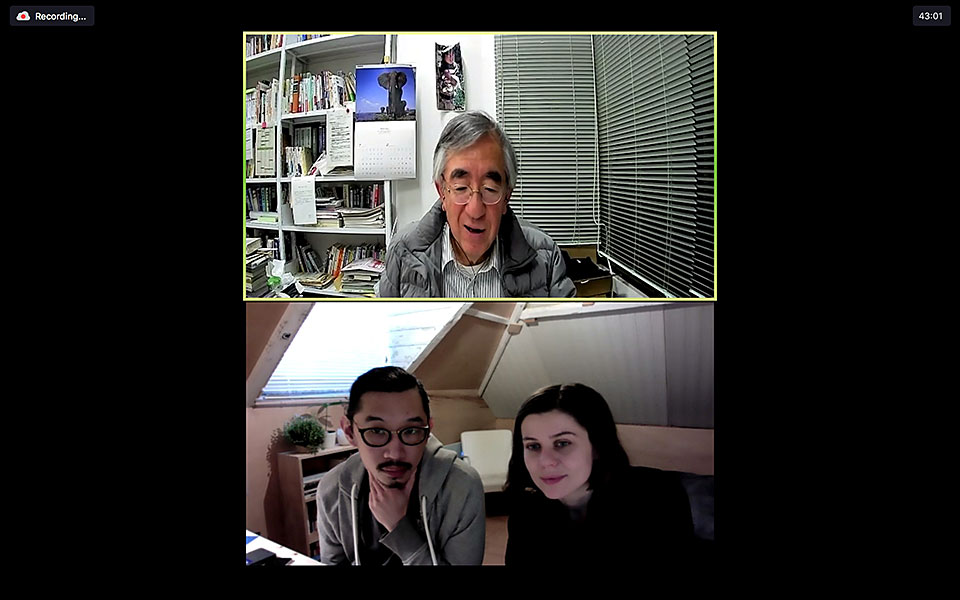
Interviewing the agronomist Yoichiro Sato
Open Studio
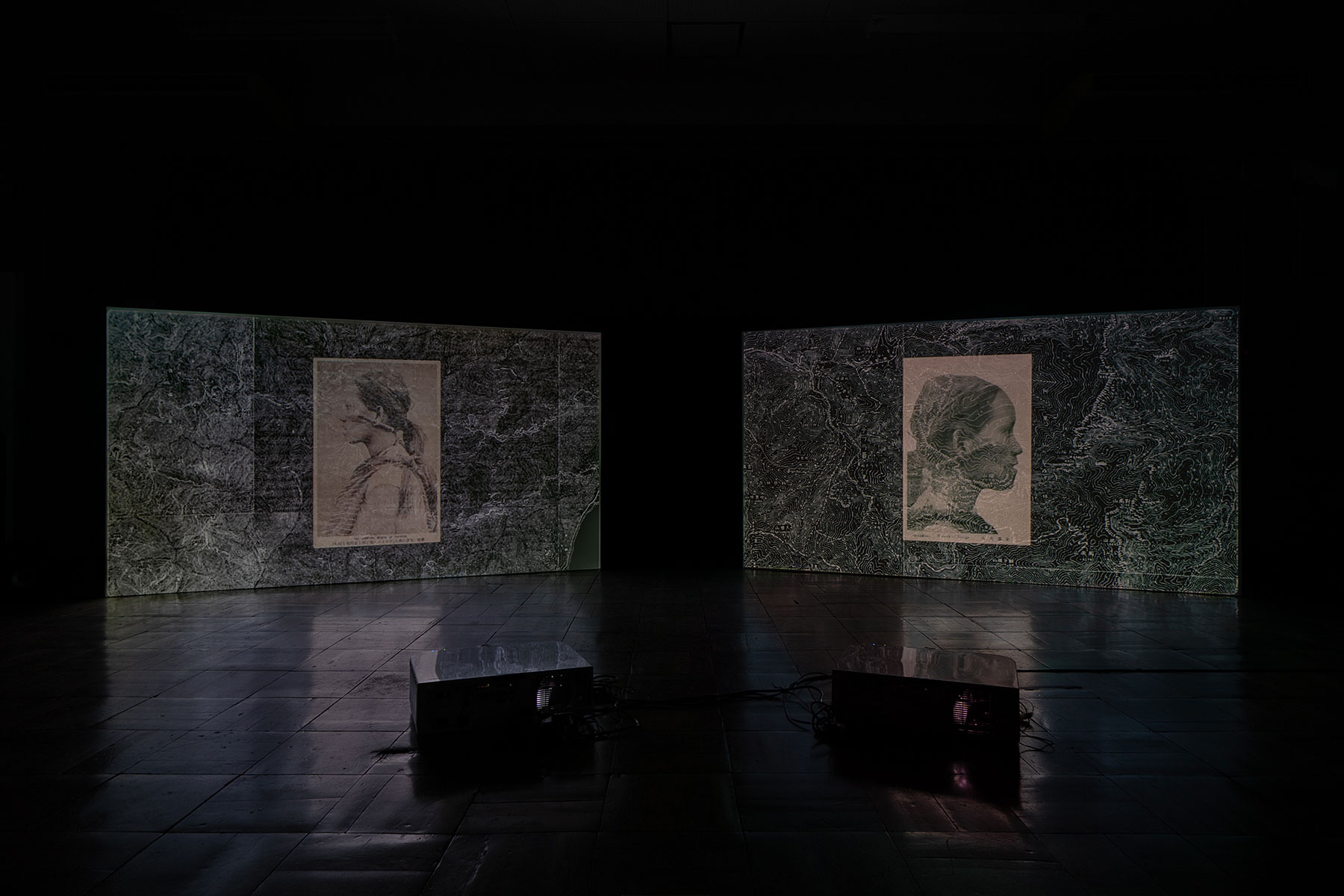
Sticky Entanglements
Installation view

Sticky Entanglements
Two-channel video, 11’25”

Sticky Entanglements
Installation view
Artist Statement
Sticky Entanglements
Looking at crops and soil as living archives, we have been exploring the critical materiality and hidden narratives of cross breeding rice; addressing landscape formation and the cultivation and commercialisation of genetically modified crops as a technology of control. Focusing on entangled readings of Hōrai rice, — the Japanese Empire rice engineering project in colonial Taiwan (1895-1945)— our research attempts to visibilize a counter cartography within the engineered body of the seed where varying layers of power, knowledge, science and ecologies are ingrained within.
The research builds upon critical encounters with archival materials, governmental reports, scientific studies, literature and interviews, expanding further from the research conducted a year ago into narrating the very sticky threads drawn by this scientifically improved seed and which are rendered invisible into dominant and flattening readings of agriculture and nature.
Reason for Selection
Through research on Hōrai rice, a type of rice brought to Taiwan when it was a colony of Japan, Klodiana Millona and Yuan Chun Liu will focus on the rice crop improvements that took place at that time within the entanglement of politics, technological innovation, land improvement, and economics. Deconstructing the image the West tends to have about Taiwan as an abundant and peaceful land, this project continually probes the intrinsic historical correlation between agriculture in Taiwan and powerful nations. The duo plans to conduct work online through doing research at an archive about Meiji-era (1868–1912) foreign policy and speaking with experts. The project is expected to reveal perspectives objectively interpreting present-day agriculture alongside subtly illuminating aspects of farmland and crop development in terms of how governance has historically related to rice and the land.
Comment for Open Studios
Based in Rotterdam, the Netherlands, millonaliu is two artists: the Albanian Klodiana Millona and Taiwanese Yuan Chun Liu. The duo’s interdisciplinary activities encompass art, design, and architecture.
During the two-year online residency, the pair have investigated Hōrai rice, a type of crossbred Japonica rice that was cultivated in Taiwan during its time as a Japanese colony, and attempted to reveal the whereabouts of the invisible power hidden in the landscape. The rice originally grown in Taiwan was the long and thin indica subspecies of Asian rice (Oryza sativa). Hōrai rice was developed by the Empire of Japan for export back to Japan. The round and glutinous Hōrai variety Taichung 65 was regarded as a “miracle rice” that, though a variety of Japonica, could be cultivated in hot and humid climates, and was also highly resilient to disease. When we consider how the structures for controlling the land to cultivate Hōrai did not stop only at agriculture, but also involved civil engineering for the irrigation and the chemical industry for the fertilizer, we begin to see the multilayered nature of the power that lay over the landscape of Taiwan. The two screens show the relationship between Taiwan and the Empire of Japan, tightly entangled by both history and a kind of stickiness. What was the reality behind Hōrai, a name conjuring up in Japanese an image of a Shangri-la? Through rice as a node of images, politics, and economics, how can we unravel the contours of the history that unfolded across Japan and other Asian nations? This is what the video asks us. (Director, Ozawa Keisuke)
OLTA
Japan

Photo: Shingo Kanagawa
OLTA is a group of six artists formed in Tokyo in 2009. Its practice to date has focused on collective acts within particular communities like games and festivals, and the communication that unfolds there, which it has reconfigured and re- enacted in such works as Hyper Popular Art Stand Play and TRANSMISSION PANG PANG. Its recent work Cultivate House saw the group undertake cultivation and production at a mobile home built on untilled land. OLTA’s practice disrupts the foundations of various communities, and brings out the ideas, customs, language, and lifestyles that underpin these.
Selected Works

Participating in a composting workshop with the soil ecologist Nobuhiro Kaneko in Fukushima
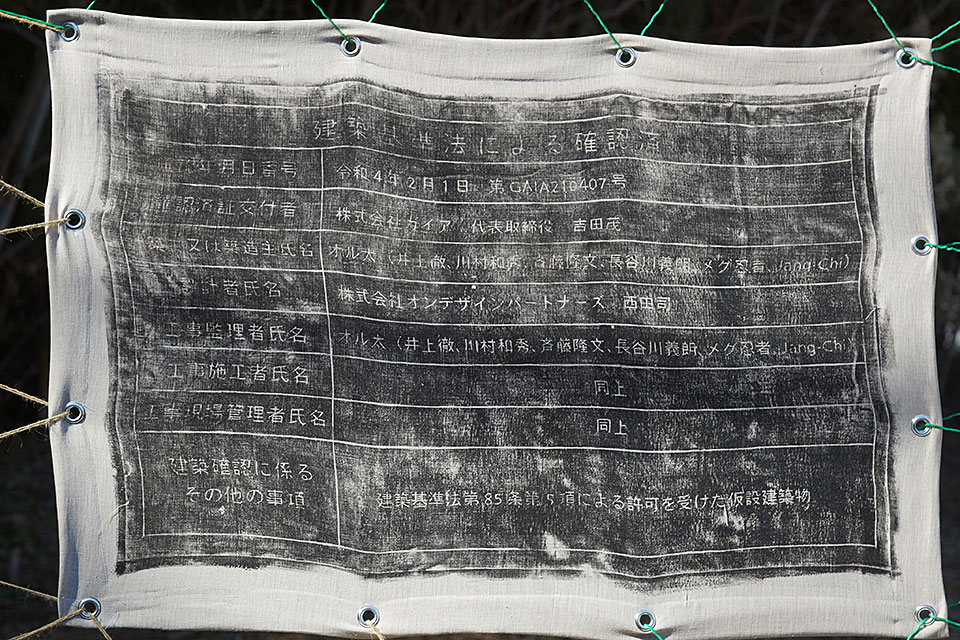

Open Studio

Cultivate House: Uncertain Generation

Interior view of Cultivate House
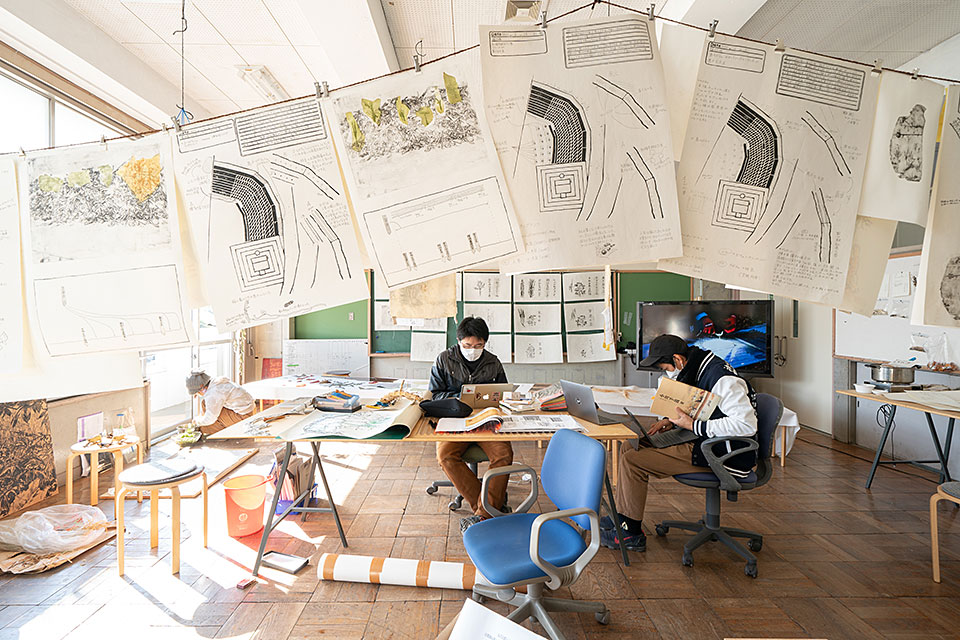
In the studio
Artist Statement
Cultivate House: Uncertain Generation
We built a temporary house on a piece of land in Moriya City unused for several years, and while living there, are thinking about humankind and its environment through farming.
Farming is the human activity of working the land sustainably. Humans cultivate the land and raise crops. But in reality, this is something difficult to experience unless you are an actual farmer or have a field.
Sandwiched between a bamboo grove and houses, the land we have borrowed from a local resident for the project is designated an “urbanization control area.” In such an area, development and building construction is in principle prohibited in order to prevent uncontrolled urbanization. So that we could construct a “house” for farming at this location, we applied for a building permit for what is termed a temporary “entertainment place.” Cultivate House functions as an actual house with a “barn” for storing tools as well as beds and a composting toilet. Part of the wall opens out toward the field like a stage.
In the field, we have planted true-bred and native species, and engage in no-till farming using companion planting and mulched grass. Due to changes in how different species grow according to the conditions of the soil, crops cultivated through such methods cannot be harvested in the same season. On the other hand, crops grow by harnessing the ecosystems that exist in the soil.
Observing the process of the crops growing, we have created prints on artificial materials found at the site like plastic and aluminum cans. We have also used the bamboo and arrowroot growing wild on the land to make objects. We cook and eat the crops, and use rice bran or husk to turn human waste into compost. Starting from a vacant plot of land, we are proposing ways to readapt human activities to the environment by finding cooperation with nature.
Reason for Selection
For its ARCUS Project residency, OLTA will create a version of Cultivate House. The group will build a mobile home and toilet on a plot of land in Moriya City, where the members will alternately reside and till the uncultivated land, while the toilet will be used as a composter to turn human waste and food waste into fertilizer. Arriving at new realizations and gaining insights day by day as they live there, the members will then harness these in their subsequent lives. The group will conduct online research with a focus on movements and historical evidence regarding the relationship between agriculture and modernization in Japan, and attempt to verify its own activities from a critical position. Both artists and the land being open to processes of becoming, immersed in nature rather than standing in opposition to it, offers beneficial perspectives and ways of living in these troubled times when we face the challenges of climate change and the coronavirus pandemic.
Comment for Open Studios
At ARCUS Project, the Tokyo-based, six-member artist collective OLTA has created Cultivate House: Uncertain Generation. This project was reconfigured from a previous endeavor according to the specific features of the land in Moriya City. During the first year, the group visited a soil ecologist in Fukushima Prefecture to learn more about no-till farming and composting. In Moriya, the group selected a candidate field with the assistance of a soil hydrologist. During the second year, OLTA actually planted, farmed, and harvested dry-land rice, gourd, and beans in the field. In parallel with this, the group undertook the application process necessary for building a small hut on the site.
Precisely because they are not specialists engaged in agriculture, OLTA sought out a model of farming different from the highly industrialized one of investment and recoupment. And this is why OLTA is able to utilize the experimental method of no-till farming and grow crops using native species instead of F1 hybrid seeds that only yield a one-off crop. When building the small hut on the land, the group also faced the hurdle that is the laws surrounding land use and architecture, and experienced the difficulty of farming crops like they wanted. Over the course of this project that proceeded as if stitching up the gaps within industrialized agriculture, there emerged prints, frottages, drawings, and harvested crops, all unfolding at ARCUS Studio as well as in the nearby field and hut. Assuming that the project’s significance lies not in reaching a state of “completion” but in producing a “cycle,” we must hope that the endeavor continues across other locations and points in time in the future. (Director, Ozawa Keisuke)